With such a heavy emphasis on supplements and nutrition today in sports, it is important for athletes to understand their specific needs. These needs vary across a wide range of sports and topics. While some aspects of sports nutrition are commonsense, new information is breaking every day. The following are some of the latest trends in the sports nutrition sector.
Sport-to-Sport Nutrition
Some of the most common stories heard throughout sports today focus on head injuries. Concern is constantly raised for athletes whose lives are negatively impacted by these injuries, especially in contact sports such as football and hockey. 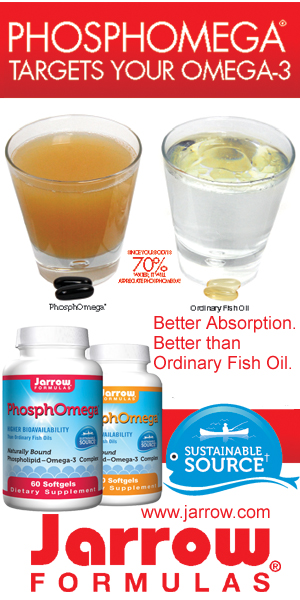 This has led to a major outcry from many important figures in sports, such as former NFL star quarterback Kurt Warner, who suffered multiple concussions before retiring.
This has led to a major outcry from many important figures in sports, such as former NFL star quarterback Kurt Warner, who suffered multiple concussions before retiring.
Recent research indicates omega-3 fatty acids can increase the brain’s resilience to trauma (1). Omega-3 fatty acids have long been proven to benefit cardiovascular health, brain development, eye health and more. Only recently have they been shown to benefit sports-related head injuries (1). These fatty acids exert a protective mechanism at the cellular and neuronal levels, including the modulation of the inflammatory cascade following traumatic brain injuries (1). As an affordable and available supplement, omega-3 fatty acids should be a top priority for all athletes, especially those at higher risk for head injuries.
Triathlons are now very common across the country, especially with the rise of events such as the Warrior Dash and Tough Mudder competitions. Preparation is essential for these strenuous events, and that begins with sports nutrition.
Energy support is essential given how hard triathletes train for competitions (2). Protein intake is crucial for post-exercise recovery and adaptation (2). Daily carbohydrate intake also must be emphasized throughout the training and competition (2). A recent study found that while most Olympic-distance triathletes consumed significantly more carbohydrates than required before races, their during-race carbohydrate intake dropped considerably, with many athletes failing to meet recommended levels (3). Easy supplement solutions to make up for the energy and hydration deficit could be electrolyte-loaded beverage add-ins, shots or gel packs.
Many athletes, from weightlifters to wrestlers, focus intensely on muscle-building. A factor in building muscle is the presence of essential amino acids, with leucine being one of the most important (4). Research done on muscle protein synthesis during exercise examined the differences between athletes who consumed essential amino acids both with and without leucine enrichment (4). Increasing the concentration of leucine by 3.5 grams in an essential amino acid drink consumed during exercise yielded a 33% greater muscle protein synthesis response than consuming an essential amino acid drink with standard amounts of leucine (4).
Another popular supplement for athletes focused on muscle-building is creatine. Creatine supplementation increases the intracellular pool of phosphocreatine in skeletal muscle. Phosphocreatine provides a reserve of energy to rapidly regenerate ATP, which is consumed as a result of muscle contraction. Creatine has been studied in hundreds of clinical trials and has shown benefits including increased muscle strength, power and size without major adverse effects (5).
For muscle-building athletes who are also tr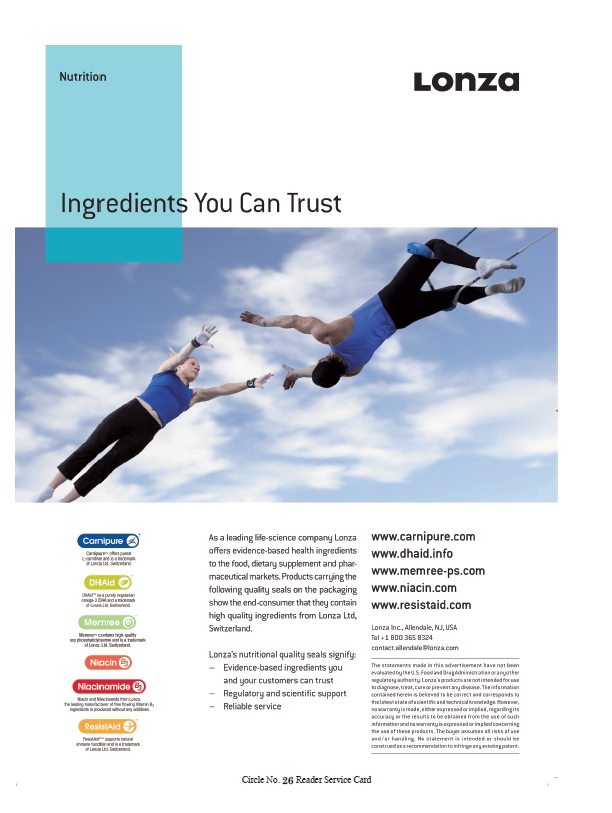 ying to stay lean, thermogenics may help keep fat away from the muscle. One thermogenic supplement is bitter orange, which is known for helping burn off fat (6). Another well-known thermogenic is DHEA, which is sometimes also known as 7-Keto. DHEA is also known as a metabolism booster and fat burner, as well as an aid in fighting exercise-induced muscle damage (7). It helps activate three enzymes that affect metabolism. One final thermogenic worth noting is capsaicin, which is prevalent in chili peppers. Capsaicin helps regulate and stimulate metabolism (8).
ying to stay lean, thermogenics may help keep fat away from the muscle. One thermogenic supplement is bitter orange, which is known for helping burn off fat (6). Another well-known thermogenic is DHEA, which is sometimes also known as 7-Keto. DHEA is also known as a metabolism booster and fat burner, as well as an aid in fighting exercise-induced muscle damage (7). It helps activate three enzymes that affect metabolism. One final thermogenic worth noting is capsaicin, which is prevalent in chili peppers. Capsaicin helps regulate and stimulate metabolism (8).
These are just a few examples of sports where athletes require some form of supplementation to help them perform at their highest potentials. Here are some broader recommendations that apply to athletes in a variety of different sports.
Different Forms of Protein
The types of proteins available to customers continue to grow. Most proteins can be slotted into a few categories, but more companies are beginning to create blends of different proteins marketed as suitable for all athletes. While blends are attractive and sometimes ideal to certain customers, each protein has its own benefits that retailers can help match with a given athlete’s needs.
The main benefits of protein ingestion after exercise are that it encourages skeletal muscle protein synthesis, inhibits protein breakdown and stimulates muscle protein accretion (9). One of the most effective proteins in stimulating muscle protein synthesis is whey protein (9). While some companies suggest larger serving sizes, 20 grams of protein during and/or immediately after exercise is sufficient f or most people to maximize post-exercise muscle protein synthesis rates (9).
or most people to maximize post-exercise muscle protein synthesis rates (9).
Whey protein is a “fast protein” (10), refering to the rate at which the protein is digested and the speed at which muscle protein synthesis peaks. One major difference between proteins resides in their plasma amino acid levels. Enhanced plasma amino acid levels provide fertile conditions for muscle growth. Whey protein leads to a large, albeit temporary, rise in amino acid levels about 75 minutes after consumption (10). Isolated soy protein peaks around 150 minutes after ingestion, and remains elevated longer than whey protein (10).
Known as a “slow” protein because of its modest increase in plasma amino acid concentrations, casein’s effects are more gradual and prolonged (10). Casein ingestion does not increase muscle protein synthesis like whey and isolated soy proteins do, but it has shown positive results in protein breakdown (10). This makes casein attractive for protein blends because although it does not have the direct impact on post-exercise muscle protein synthesis that whey and isolated soy have, it does provide for efficient protein breakdown.
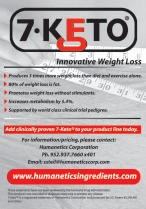 The case for blends is a good one. Immediate-impact proteins, such as whey and isolated soy, can have very positive post-exercise effects mixed with casein, for instance. A customer’s needs will dictate the ratios of each recommended protein. Athletes participating in short, intense sports or exercises may opt for more whey and/or isolated soy protein in their blend than casein. Endurance athletes participating in longer, more strenuous activities may opt for more casein in their protein blends. Advise customers on proteins based on their particular needs and activities.
The case for blends is a good one. Immediate-impact proteins, such as whey and isolated soy, can have very positive post-exercise effects mixed with casein, for instance. A customer’s needs will dictate the ratios of each recommended protein. Athletes participating in short, intense sports or exercises may opt for more whey and/or isolated soy protein in their blend than casein. Endurance athletes participating in longer, more strenuous activities may opt for more casein in their protein blends. Advise customers on proteins based on their particular needs and activities.
Muscle-Recovery Supplements
Besides the recovery benefits that proteins generally provide, many muscle-recovery supplements incorporate amino acids. For athletes, certain aminos are more helpful than others. These are just a few of them.
Both glutamine and arginine stimulate growth hormone release (10). While both amino acids are great for muscle recovery, each has its unique strong points. Glutamine has been found to increase plasma growth hormone concentrations 4.3-fold 90 minutes after ingesting just two grams of the supplement (10). This would be most beneficial to athletes doing serious heavy lifting and muscle damage in the weight room. Arginine was found to increase body weight gain by 6.5% while decreasing fat content by 11% (10). Customers most interested in arginine would be those looking to add lean muscle while also cutting down on fat.
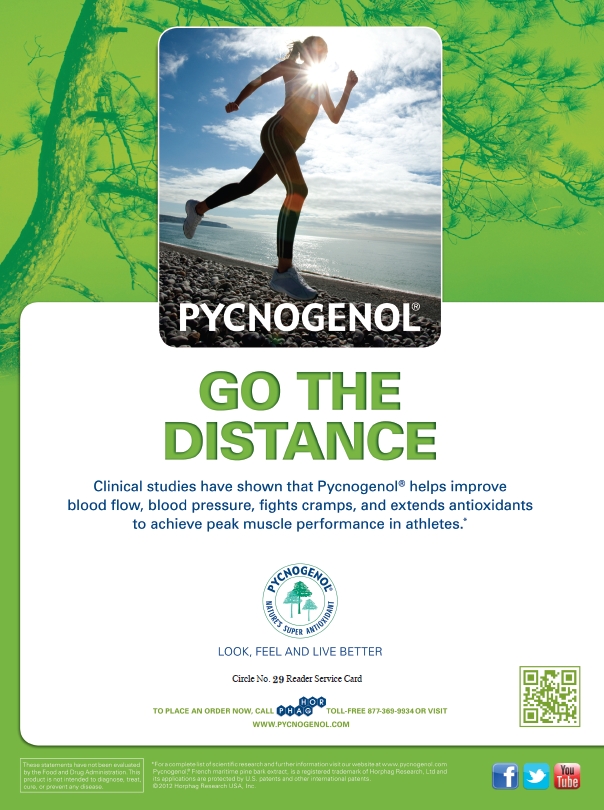 Another category of amino acids that are popular for muscle recovery are branched-chain amino acids (BCAAs). BCAAs supplementation has been shown to increase protein synthesis and decrease muscle protein breakdown (11). In a muscle-damaging exercise study where half the group ingested BCAAs both before and after the exercise, the BCAAs group had less muscle soreness than the placebo group (11). Also noted, the recovery of muscle voluntary contraction was greater in the BCAAs group than the placebo group (11). The study concluded that BCAAs administered before and following damaging resistance exercise reduces incidences of muscle damage and accelerates recovery in resistance-trained males. It is likely that BCAAs provided greater bioavailablity of substrates that improve protein synthesis, and thereby reduced the extent of secondary muscle damage associated with strenuous resistance exercise (11).
Another category of amino acids that are popular for muscle recovery are branched-chain amino acids (BCAAs). BCAAs supplementation has been shown to increase protein synthesis and decrease muscle protein breakdown (11). In a muscle-damaging exercise study where half the group ingested BCAAs both before and after the exercise, the BCAAs group had less muscle soreness than the placebo group (11). Also noted, the recovery of muscle voluntary contraction was greater in the BCAAs group than the placebo group (11). The study concluded that BCAAs administered before and following damaging resistance exercise reduces incidences of muscle damage and accelerates recovery in resistance-trained males. It is likely that BCAAs provided greater bioavailablity of substrates that improve protein synthesis, and thereby reduced the extent of secondary muscle damage associated with strenuous resistance exercise (11).
In a recent study done on both men and women, researchers found L-carnitine supplementation may improve muscle recovery after acute physical exertion (12). Over a three-week period, subjects took either L-carnitine or a placebo along with their exercise. Blood samples indicated less muscle tissue damage occurred in subjects who ingested L-carnitine than those who ingested the placebo, leading the researchers to believe that supplementation of L-carnitine can reduce chemical damage to tissues after exercise and optimize the processes of muscle tissue repair and remodeling (12).
Long-distance runners provided an ideal subject base for leg muscle recovery supplements. Such running causes acute muscle damage resulting in inflammation and decreased force production (13). Tart cherry juice, which is rich in antioxidant and anti-inflammatory properties, has been known to have a protective effect that reduces muscle damage and pain during strenuous exercise (13). A study was conducted at a long-distance relay race to find out how well tart cherry juice really works. Both the placebo group and the tart cherry juice group reported pain after the race, but the tart cherry juice group reported a significantly smaller increase in pain than the placebo group (13).
Energy Support for Athletes
Attention must also be focused on nutrition that helps maintain an athlete’s energy levels, and several worthwhile supplements can aid in the process.
Beta-alanine has become a popular energy supplement for athletes in recent years (14). In a study done by a supplement company using its beta-alanine-based pre-workout supplement, subjects performed a variety of exercises while using both a placebo and the beta-alanine-based supplement (15). Overall, athletes taking the supplement significantly improved in many performance areas, includ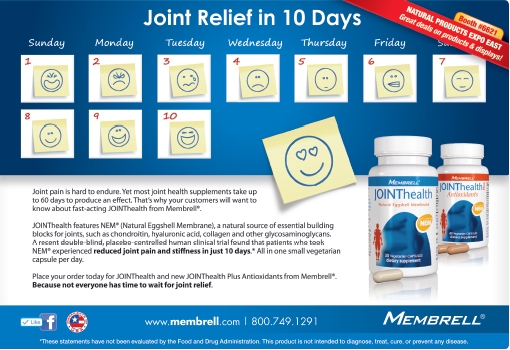 ing agility choice reaction and lower body muscular endurance (15).
ing agility choice reaction and lower body muscular endurance (15).
Other energy supplements growing in popularity are those that spur nitric oxide (NO) production (14). NO plays an important role in many functions in the body, such as blood flow and mitochondrial respiration (16). Two major contributors to NO production are L-arginine and L-citrulline (16). Studies suggest an increase in NO production may enhance oxygen and nutrient delivery to active muscles, thus improving tolerance to physical exercise and recovery mechanisms (16). These conclusions show NO as a source of energy for athletes to improve tolerance to aerobic and anaerobic exercise (16).
Relatively new to the sports nutrition aisle are respiratory aids. These supplements contain many ingredients that help make breathing easier on an athlete. One branded herbal formula contains Chinese cucumber, which has been known to clear lung heat and dissolve phlegm, and massa medicata fermentata, which helps reduce blood stasis and promote circulation (17).
Despite the bad rap it often gets for “dehydration,” caffeine can be a source of energy for athletes across a range of many sports (18). Performance benefits can be seen with moderate amounts of caffeine, especially in endurance sports, stop-and-go events (e.g., team and racquet sports) and sustained high-intensity activity lasting from one to 60 minutes (e.g., swimming, rowing and middle/distance running) (18). An important consideration with caffeine is the individual, personalized response for each athlete in regards to factors like sleep and hydration (18).
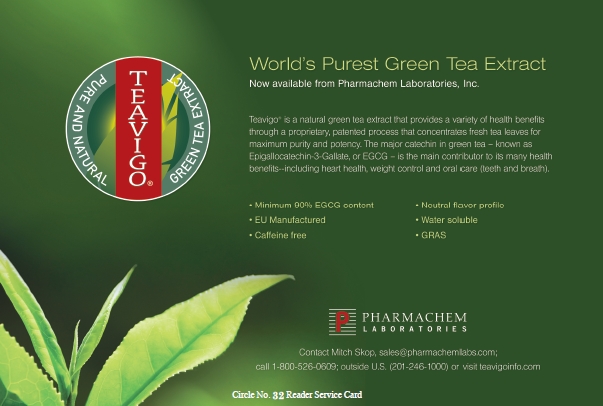 Caffeine intake often comes with the downside of a crash, especially when consumed in large quantities. A possible solution to this problem is ribose. Ribose could potentially aid in maintaining or lowering extra-cellular adenosine concentrations, benefitting the flux of intracellular calcium, supporting intracellular energy production and potentially lessening the perceived “crash” felt by many. Every cell requires adequate levels of energy to maintain its integrity and function. Caffeine has the potential to task this energy equilibrium. Ribose along with caffeine may be the perfect substrate to aid in the potential intracellular energy demand and reduce unpleasant side effects of caffeine, while still preserving the desired benefits of this stimulant consumed daily by many (19).
Caffeine intake often comes with the downside of a crash, especially when consumed in large quantities. A possible solution to this problem is ribose. Ribose could potentially aid in maintaining or lowering extra-cellular adenosine concentrations, benefitting the flux of intracellular calcium, supporting intracellular energy production and potentially lessening the perceived “crash” felt by many. Every cell requires adequate levels of energy to maintain its integrity and function. Caffeine has the potential to task this energy equilibrium. Ribose along with caffeine may be the perfect substrate to aid in the potential intracellular energy demand and reduce unpleasant side effects of caffeine, while still preserving the desired benefits of this stimulant consumed daily by many (19).
The most important physiological determinants of peak endurance performance is the capacity to transport oxygen to the working muscle and diffusion from the muscle to the mitochondria (20). One of the best supporters of these processes is coenzyme Q10 (or CoQ10). CoQ10 plays a key role in mitochondrial energy production and is recognized as a powerful antioxidant (21). Research also shows that improved cellular energy metabolism occurs with the use of CoQ10 (21).
With the needs of athletes changing constantly among many sports, it is increasingly important to stay up-to-date on sports nutrition and supplement information. This growing field could provide an athlete with just the advantage he or she needs to be at the highest peak of performance. WF
References
1. M.D. Lewis and J. Bailes, “Neuroprotection for the Warrier: Dietary Supplementation with Omega-3 Fatty Acids,” Mil. Med. 1120–1127 (2011).
2. T. Stellingwerff, R.J. Maughan and L.M. Burke, “Nutrition for Power Sports: Middle-Distance Running, Track Cycling, Rowing, Canoeing/
Kayaking, and Swimming,” J. Sports Sci. , S79–89 (2011).
3. G.R. Cox, R.J. Snow and L.M. Burke, “Race-Day Carbohydrate Intakes of Elete Triathletes Contesting Olympic-Distance Triathlon Events,” Int. J. Sport Nutr. Exerc. Metab. 299–306 (2010).
4. S. Pasiakos, et al., “Leucine Intake During Exercise Builds Muscles,” Am. J. Clin. Nutr. 809–818 (2011).
5. J. Sundell, J. Hulmi and J. Rossi, “Whey Protein and Creatine as Nutritional Supplements,” Duodecim 127 (7), 700–705 (2011).
6. D.K. Hansen, et al., “Physiological Effects Following Administration of Citrus aurantium for 28 Days in Rats,” Toxicol. Appl. Pharmacol. 236–247 (2012).
7. Y.L. Liao, et al., “Effect of Dehydroepiandrosterone Administration on Recovery From Mix-Type Exercise Training-Induced Muscle Damage,”Eur. J. Appl. Physiol. Epub 2012.
8. J.T. Kang, et al., “Dietary Capsaicin Attenuates Metabolic Dysregulation in Genetically Obese Diabetic Mice,” J. Med. Food 310–315 (2011).
9. L.J. van Loon, and M.J. Gibala, “Dietary Protein to Support Muscle Hypertrophy,” Nestle Nutr. Workshop Ser. 79–89 (2011).
10. G.L. Paul, “The Rationale for Consuming Protein Blends in Sports Nutrition,” J. Am. Coll. Nutr. 464S-472S (2009).
11. G.H. Howatson, et al., “Exercise-Induced Muscle Damage Is Reduced in Resistance-Trained Males by Branched Chain Amino Acids,” J. Int. Soc. Sports Nutr. 9 (1), 20 (2012).
12. J.Y. Ho, et al., (2009). “L-Carnitine Supplementation May Improve Muscle Recovery After Physical Exertion,” Metabolism, Epub, Dec. 30, 2009.
13. K.P. Kuehl, et al., “Efficacy of Tart Cherry Juice in Reducing Muscle Pain During Running: A Randomized Controlled Trial,” J. Int. Soc. Sports Nutr. 7, 17 (2010).
14. R.J. Maughan, P.L. Greenhaff and P. Hespel, “Dietary Supplements for Athletes: Emerging Trends and Recurring Themes,” J. Sports Sci. 29 (Supp. 1) S57–66 (2011).
15. B.D. Spradley, et al., (2012). “Ingesting a Pre-Workout Supplement Containing Caffeine, B-Vitamins, Amino Acids, Creatine, And Beta-Alanine Before Exercise Delays Fatigue While Improving Reaction Time and Muscular Endurance,” Nutr. Metab. (Lond) 9, 28 (2012).
16. R. Bescós, et al., “The Effect of Nitric-Oxide-Related Supplements on Human Performance,” Sports Med. 42 (2), 99–117 (2012).
17. Information on AirAide supplied by NuCentury Herbs.
18. L.M. Burke, “Caffeine and Sports Performance,” Appl. Physiol. Nutr. Metab. 33 (6), 1319–1334 (2008).
19. J.S. Herrick, et al., “D-Ribose—An Additive With Caffeine,”Med. Hypotheses 72 (5), 499–500 (2009).
20. D.C. McKenzie, “Respiratory Physiology: Adaptations to High-Level Exercise,” Br. J. Sports Med. 46 (6) 381–384 (2012).
21. M.N. Bergamini, “A Water Soluble Coq10 Formulation Improves Intracellular Distribution And Promotes Mitochondrial Respiration In Cultured Cells,” PLoS One. 7 (3), e33712, Epub Mar. 14, 2012.
Published in WholeFoods Magazine, August 2012










